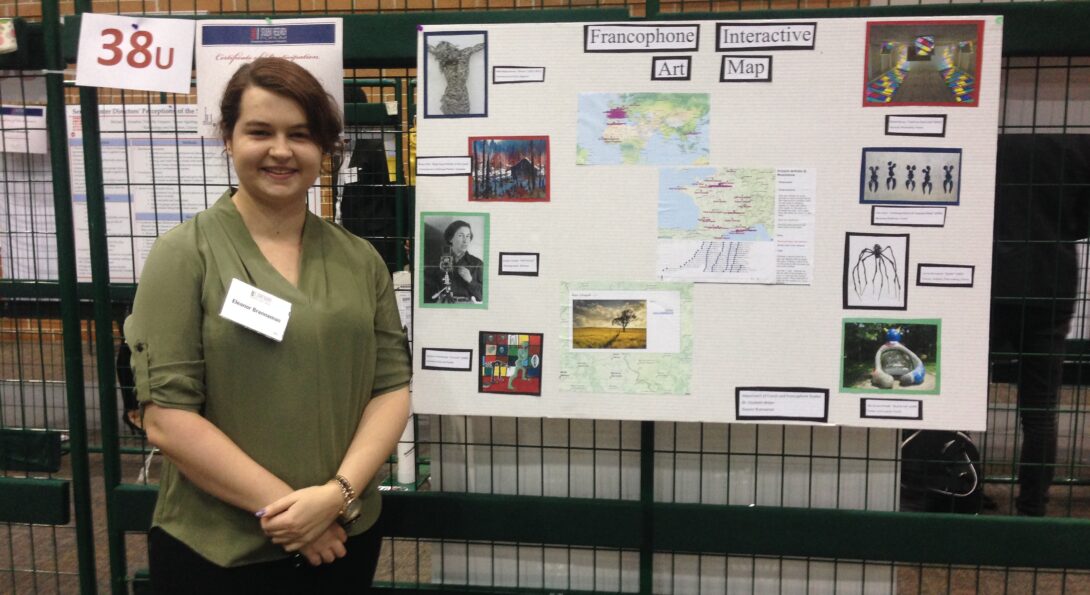Research Project
French and Francophone Interactive Art Map

Ellie (Eleanor) Brannaman produced an interactive art map of French and Francophone artists for 4th semester French BLP students to contribute to and engage with.
- Research Area(s)
- Digital Humanities
- Undergraduate Research
- Co-Investigators
- Weber, Elizabeth Dolly
- Funding Source
- LASURI Undergraduate Initiative
Abstract
Ellie (Eleanor) Brannaman (B.A. French) produced an interactive art map for French and Francophone artists. Starting Fall 2016, Dr. Weber incorporated this project into a 4th semester French class. After receiving the name of their artist (there are 80 to choose from spanning from the 1600s to the present day, male and female, working in various mediums, from various Francophone countries), the student will find the longitude and latitude of the artist's birthplace, a picture of their art, a short description of the artist, and sources for the aforementioned information. Students then organize the information in a Blackboard-like quiz set up. It is an interactive map: when the student fills out their information on the artist, an interactive dot will appear where the artist was born. The other students in the class all have access to this map and are encouraged to explore it. The purpose of this project is to broaden the horizons of students by presenting a wide variety of art from around the Francophone world. The interactive map is easy to use, and it can help learning about art more fun for the student. It also helps them practice their French grammar and vocabulary when they write their description. When gathering the data, Brannaman made an effort to include many types of artists from different times and places so students would have a wide range to pick and learn from. Most of the data was collected from museums and even from the Art Institute of Chicago – it was important to make sure that there was enough information on the artist so that the student wouldn’t spend too much time trying to find information. All the data went into the public access site PB works, making it accessible for other French students, other art students, or other universities.